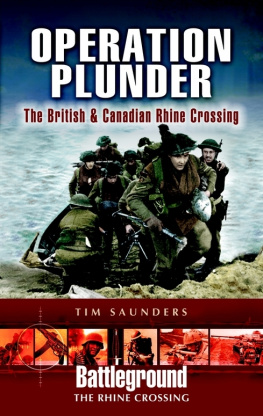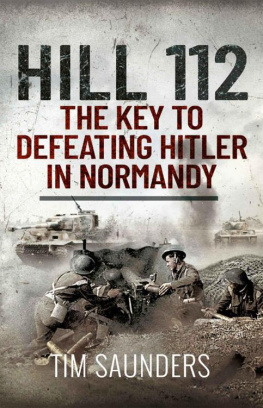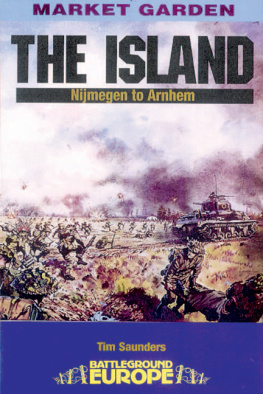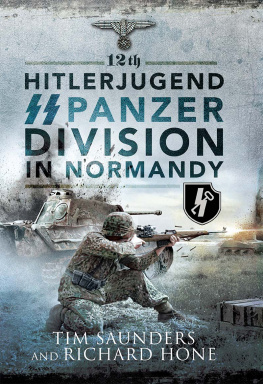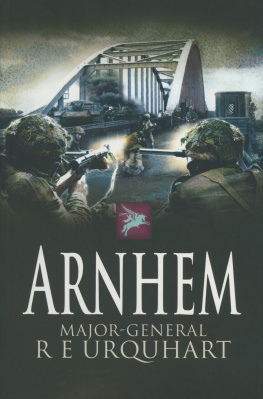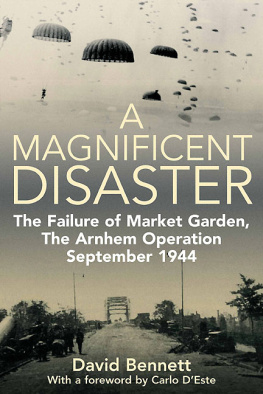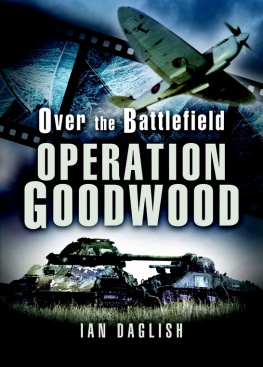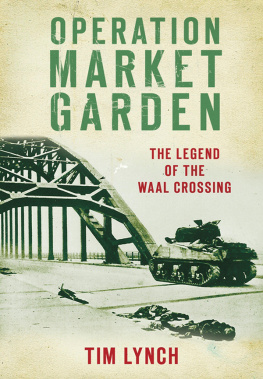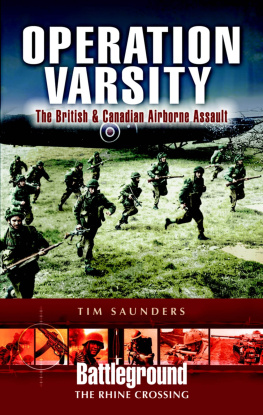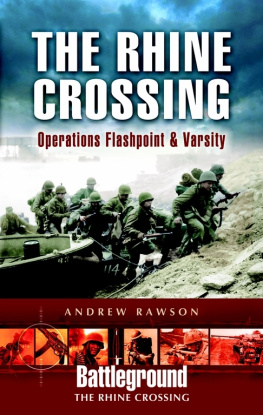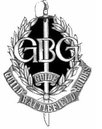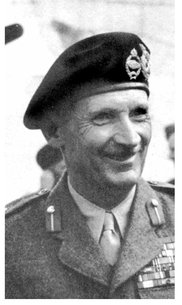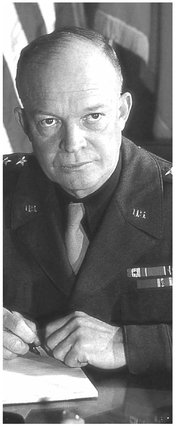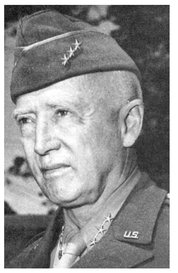Acknowledgements
I would like to thank the Land Warfare Centre Library for access to their unrivalled collection of increasingly rare infantry regimental histories. These are absolutely essential in writing about an operation such as this. Kate many thanks and a happy retirement.
Thanks and acknowledgements are due to Richard Hone, formerly of the REME and now of the xxxx Vehicle xxxx who helped me with armoured vehicle aspects of this book. I am most grateful for his expert assistance, in an area that is not my forte.
I would also like to thank those authors, publishers, regiments and corps who have allowed me to quote freely from their works. Without their generous support, a book like this would not be possible. Fellow Battleground author Andrew Rawson helped me with copies of maps from the US National Archive. His timely assistance with these helped me greatly.
Finally, thanks are due to the headquarters and museums of the British Army regiments who forced the crossing of the Rhine, for their help in putting me in touch with veterans and making available documents and maps that have not been previously published. As ever it is a pleasure to speak to Canadian military headquarters and museums, who see it as their job to actively promote and disseminate their regiments history. They give their time and resources freely, so many thanks are due to them and all those others who have helped make this book possible.
Whether at home or on the ground, enjoy the tour.
Tim Saunders
Warminster 2006
CHAPTER ONE
Background
IN EARLY SEPTEMBER 1944, following their victory in Normandy and pursuit across northern France, the Allies believed that final victory over Nazi Germany was close at hand. The Red Army, to the east, was inexorably closing on Germany; while the Allied air forces harried the Wehrmacht and did their best to obliterate the German industrial base and lines of communication. In the west, Allied armies were ranged from Switzerland to the North Sea, preparing for the final assault on Hitlers Germany.
Optimism ran high, with normally stoic intelligence officers predicting that victory against Germany was within sight, almost within reach and they reported that it was unlikely that organised German resistance would continue beyond 1 December 1944. Dissenting voices who believed that the German forces were not finished and were preparing a last-ditch struggle in the field at all costs, were, in the prevailing enthusiasm, ignored.
Montgomerys attempt, in Operation MARKET GARDEN, to bounce 21st Army Group across the Rhine onto the North German Plain had demonstrated that the Germans were far from finished. There was to be no repeat of the 1918 German civil and military collapse after Normandy that many commanders who had served in the Great War predicted and no dash into the heart of Germany in 1944. Quite the reverse, for while the Allies clinched victory in Normandy and the British and American Armies streamed east across France, 200,000 mostly slave labourers, worked to strengthen the pre-war German defences known as the West Wall or Siegfried Line. The physical barrier was to be manned by new citizen or volksgrenadier formations, with Himmler calling to arms the young, the old and many men previously excluded from the Wehrmacht on grounds of economic necessity, health, etc. To these men were added the now largely redundant manpower from the Luftwaffe and Kriegsmarine . Together they were drafted into the new volksgrenadier divisions for the final defence of the Third Reich. The Allies had and were to continue to underestimate the German genius for highly effective military improvisation and were largely unaware of the remarkable strategic recovery they were staging.
Field Marshall Montgomery. Victor of Normandy but defeated at Arnhem.
With the failure at Arnhem (Montgomery referred to it as a ninety percent success) General Eisenhower reverted to his broad front strategy. This favoured US doctrine (at the time) was also a politically acceptable policy that would see all three allied army groups closing up to the German frontier, breaching the Siegfried Line and then fighting their way to the Rhine, which was Germanys last strategic barrier. Destruction of the German field armies and the capture of the Ruhr, Germanys industrial powerhouse, were to be the principal targets rather than a headlong advance across the North German Plain to Berlin. The full impact of this policy rather than a dash east to Berlin was fully apparent to the British, who had an eye on the post-war situation in Europe, rather than simply an ending of the war against Germany in early 1945. In the increasingly bad autumn weather that heralded one of the worst winters for many years, the fighting was costly and Allied progress slowed to almost a halt. Nowhere was progress slower and more expensive in both British and American lives than at the Dutch town of Overloon in the Mass Pocket. Further to the north, the British fought to open the Scheldt Estuary and access to the vital port of Antwerp, which had to be open as the entry point for supplies in time for the final drive into Hitlers Reich. Elsewhere, desperate battles were fought by British and American troops to reach and then penetrate the Siegfried Line, at points such as Geilenkeirchen, where the British 43rd Wessex Division fought alongside the US 84th Division to overcome a determined enemy in weather and ground conditions that foreshadowed those they were to experience later in the winter of 44/45. Meanwhile, General Patton grumbled as his armour bogged down in the mud of Lorraine. The Germans fought with courage and determination to defend the borders of their Fatherland and it was clear that despite the continuing bomber offensive that the war was going to go on well into 1945.
General Eisenhower. Exercised a highly political command.
Hitlers counter-attack with his rebuilt army in the Ardennes in mid December 1944, launched under the cover of bad weather, caught the Allies by surprise. The German aim was to separate the Allied armies by striking north west to Antwerp, enveloping and destroying the US Ninth Army, along with the British and Canadian Armies. Initially, the Germans, benefiting from a lax American stance on a lightly held, quiet front, were successful and created a significant Bulge in the Allied lines. However, the relatively inexperienced staffs of the Allied Armies of D Day were now honed to a high state of competence and reacted quickly to close off the German advance before they reached the River Meuse. With an improvement in the weather that allowed Allied airpower free reign, by the middle of January, the Germans were pushed back behind their lines of departure, with their reserves of men and material further depleted by their offensive. Meanwhile, the Russians had begun their attack on the Eastern Front and attempts to stem their advance were increasingly sucking German resources away from the west.
Old Blood and Guts General Patton.
The Winter War

